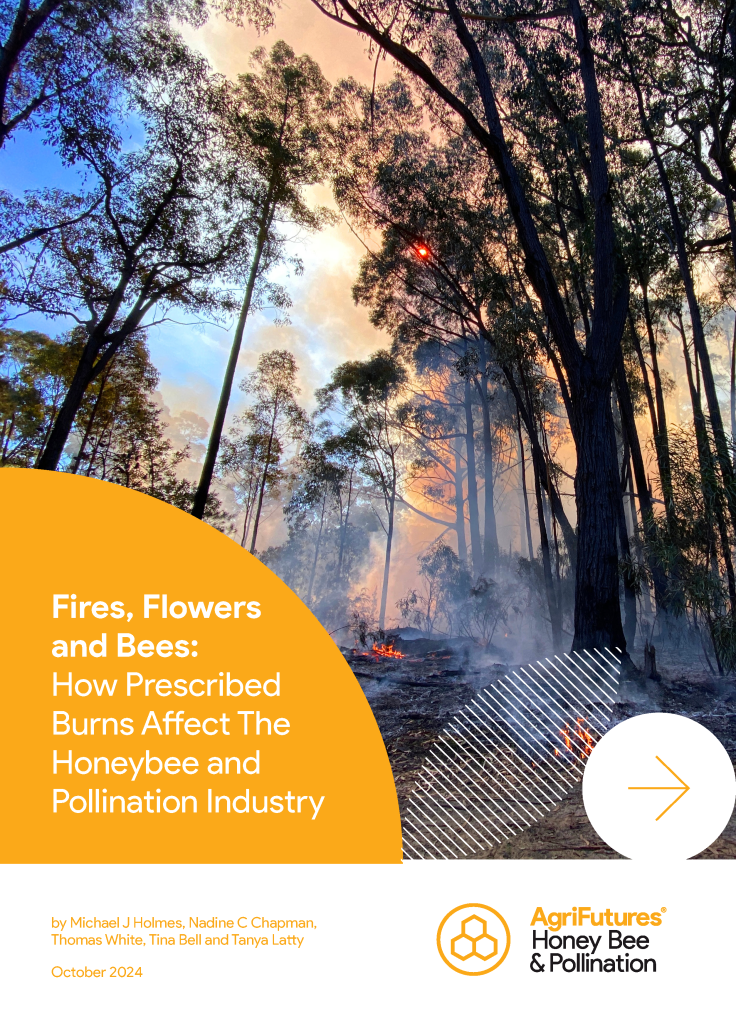Determining the impact of Varroa on virus transmission in Australian bees
This research aimed to contribute to ongoing surveillance of the Australian honey bee virus landscape as varroa establishes and spreads.
 HONEY BEE & POLLINATION
HONEY BEE & POLLINATION 
82 pages
Published: 10 Jul 2025
Author(s): Michael J Holmes, Nadine C Chapman, Thomas White, Tina Bell, Tanya Latty
Download report PDF
DownloadPurchase a hard copy - AUD $50
The Australian honey bee industry is a significant contributor to the Australian economy through the production of hive products, such as honey and beeswax and additionally, through the provision of pollination services that benefit other agricultural industries. These activities rely on the abundance and diversity of floral resources.
Wildfires, an inherent part of the Australian landscape are both unpredictable and devastating. Wildfire prevention often involves a prescribed burning strategy. This project recognises the reliance of the honey bee industry on floral resources and the significant risk that fire presents.
Prescribed burns are integral to Australia’s fire mitigation strategy. While intended to protect people, property and biodiversity, they can have unintended consequences on flower-visiting insects such as honeybees. The impact of prescribed burning can sometimes be as detrimental to honey bees as the wildfires that they aim to prevent.
This project aimed to understand the impact of prescribed burning on the honey bee industry by reviewing scientific literature, conducting beekeeper case studies, and performing a cost/benefit analysis. The findings showed that the timing of prescribed burns was a key factor influencing the economic impact on beekeepers. Larger intervals between burns reduce the impact, as do beekeepers’ site-use patterns and the expected recovery times of floral resources after wildfires and prescribed burns.
The recommendations from this project have several important outcomes for the honey bee industry including enhanced collaboration to better align fire management practices with the needs of the beekeeping industry and minimising disruptions to beekeeping activities, especially during critical periods such as prior to flowering.
The creation of a national floral resource database will provide valuable information on which plant species are important to beekeepers, their flowering times, and recovery periods after fires. This data will enable fire managers to make more informed decisions and avoid prescribed burns when floral resources are most vulnerable.
By avoiding prescribed burns during high beekeeper usage times and considering the recovery times of floral resources, the economic impact on beekeepers can be reduced. This can lead to more stable revenue streams for beekeepers and a more resilient honey bee industry overall.
These outcomes collectively contribute to a more sustainable and profitable beekeeping industry, ensuring that both fire management and beekeeping can coexist harmoniously.